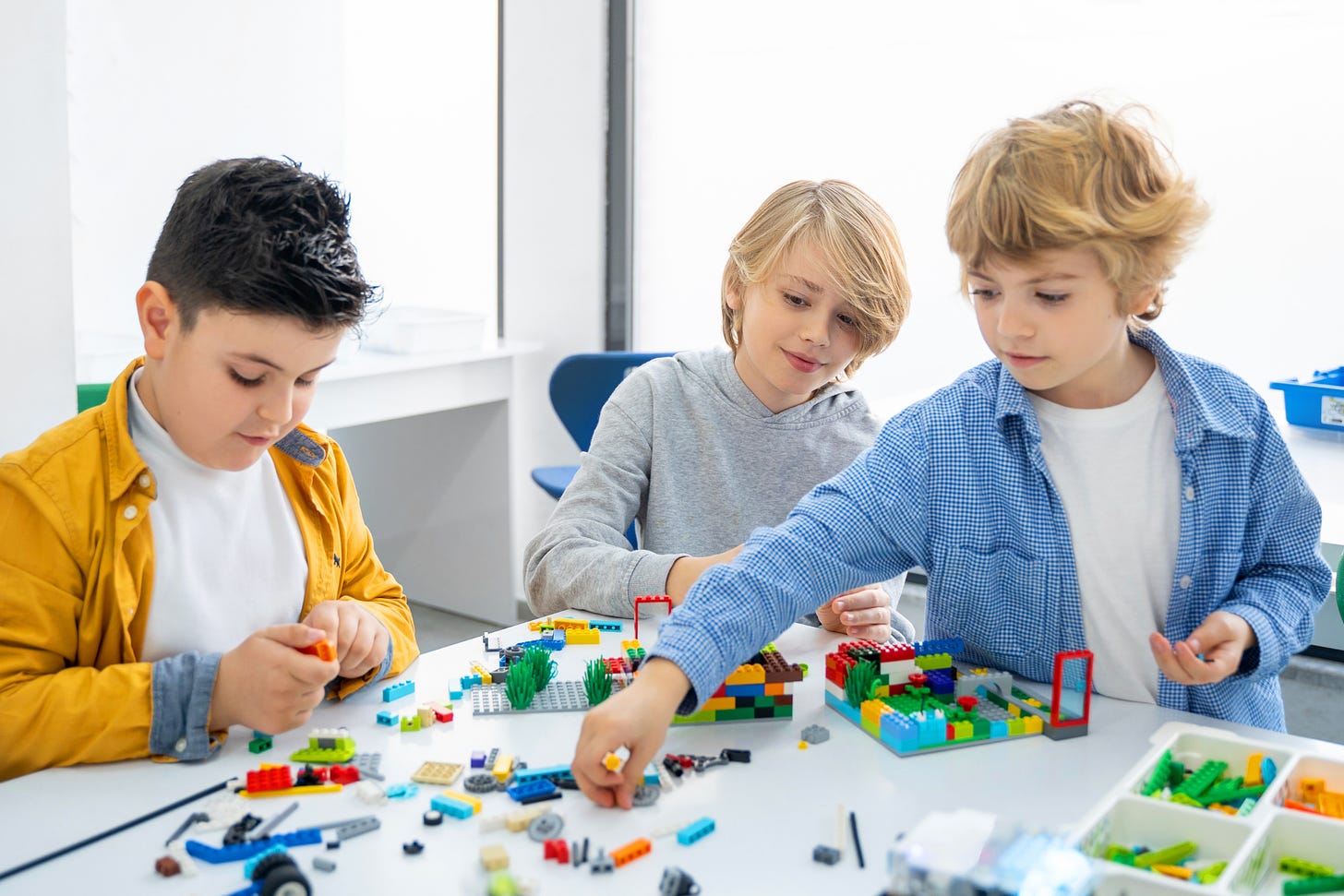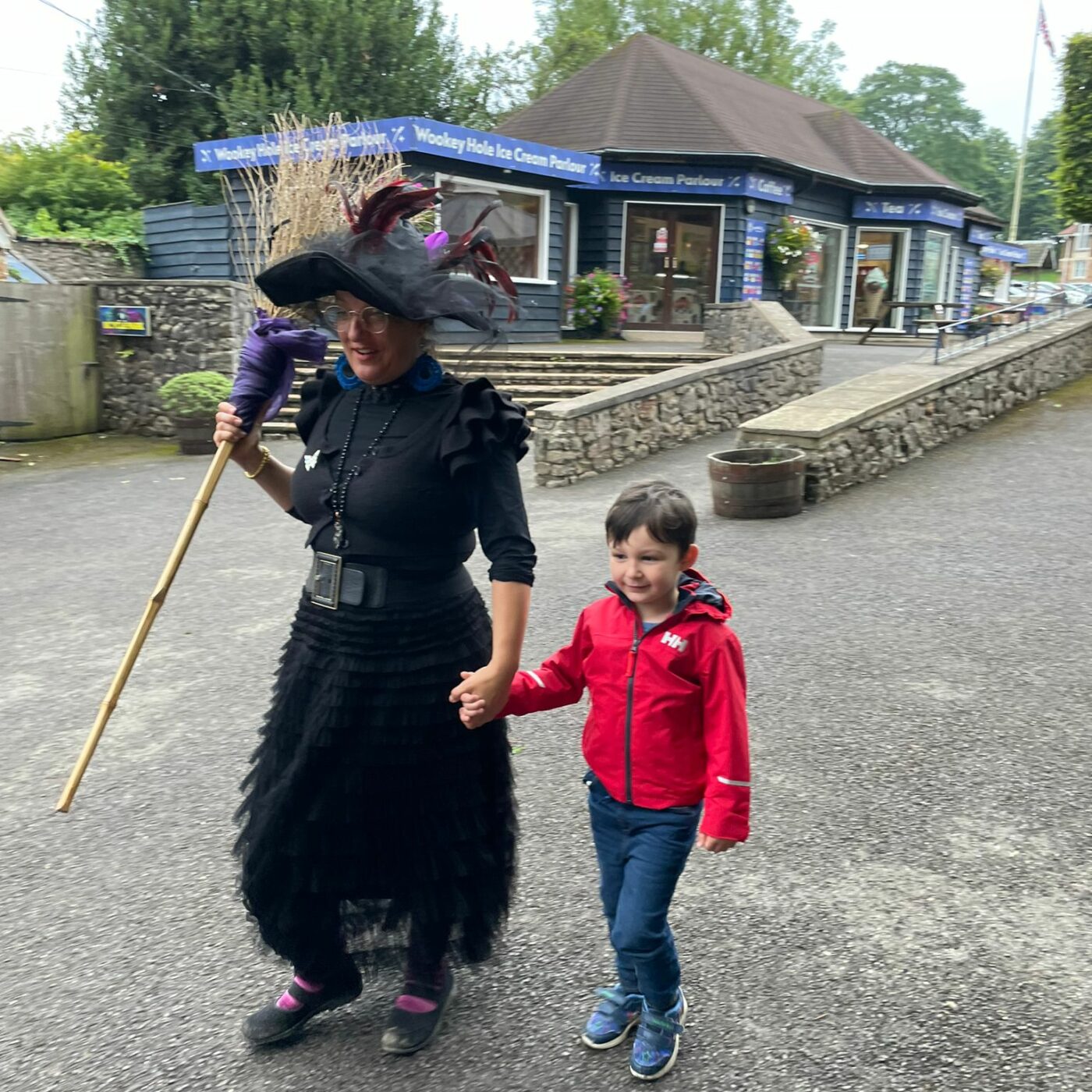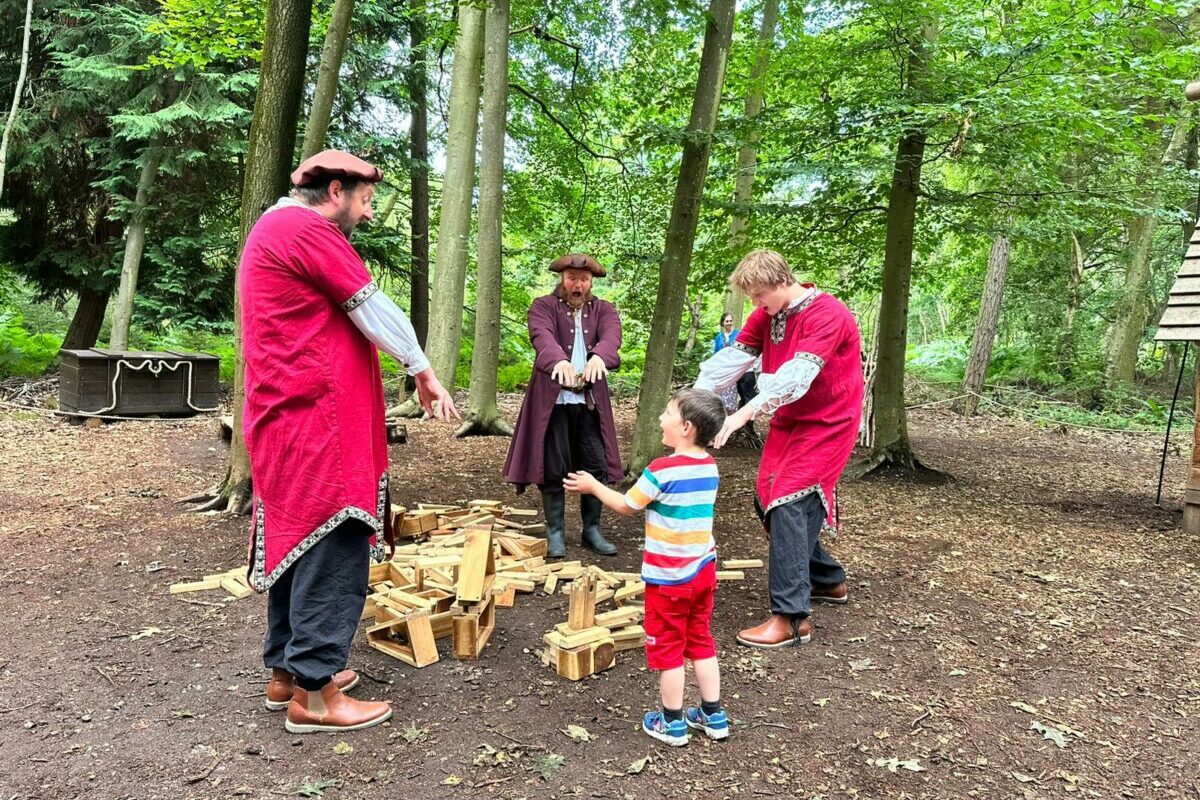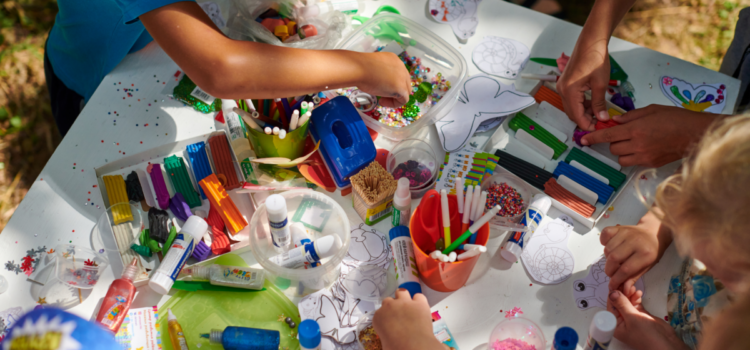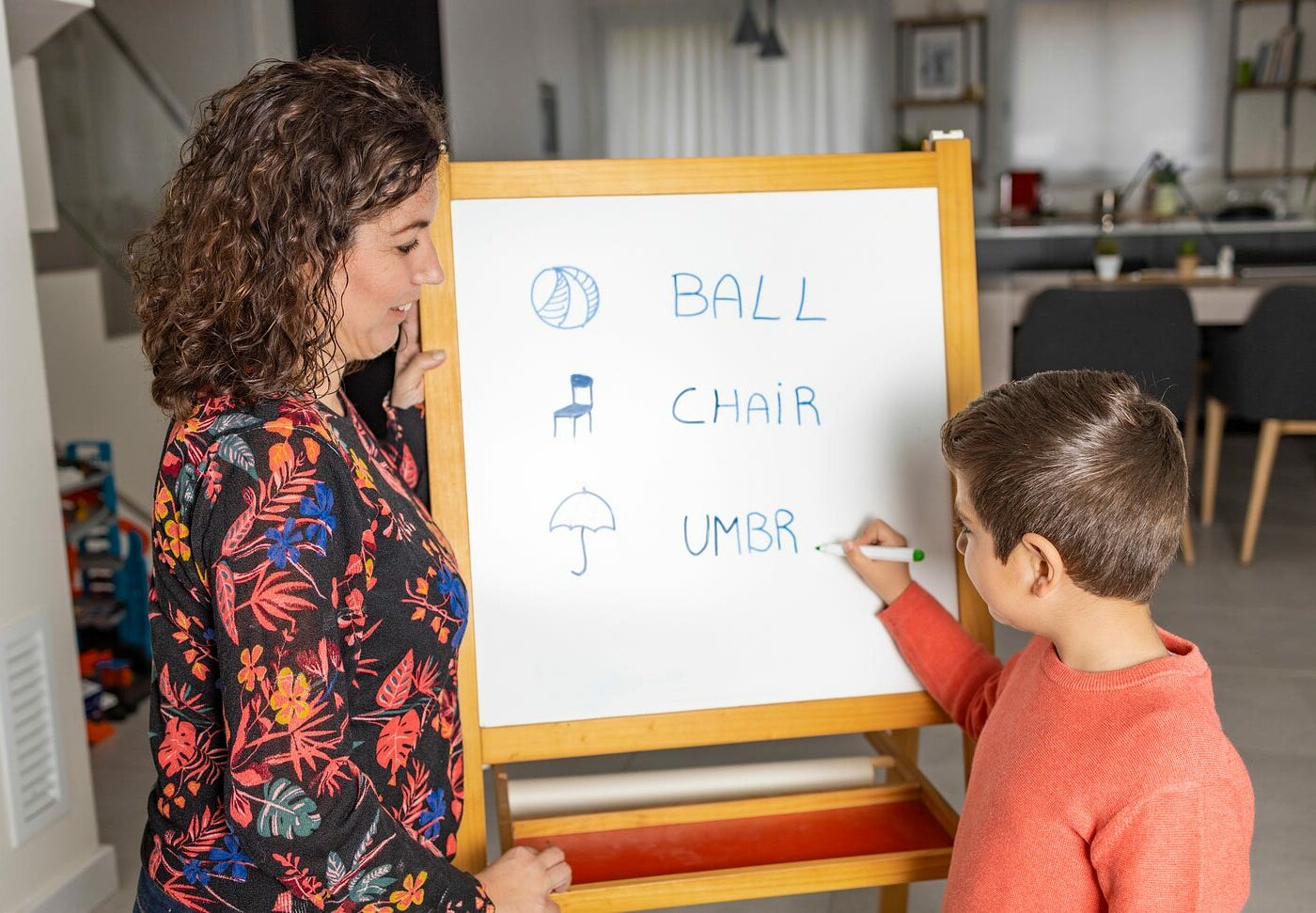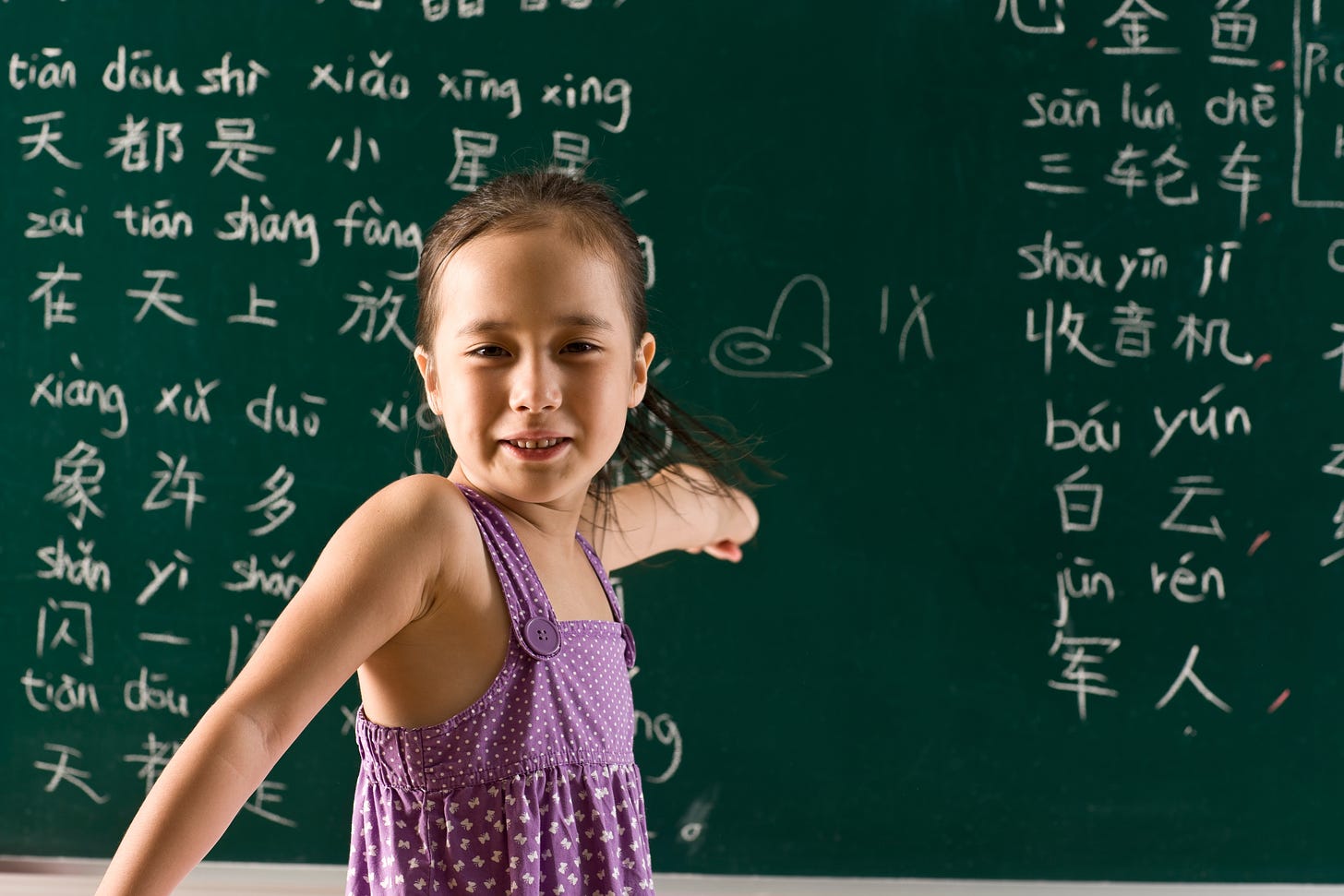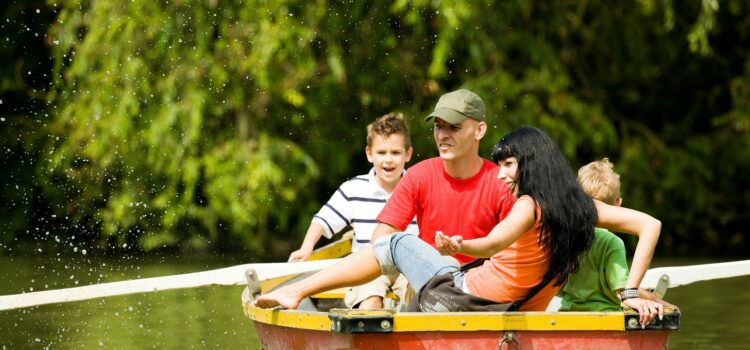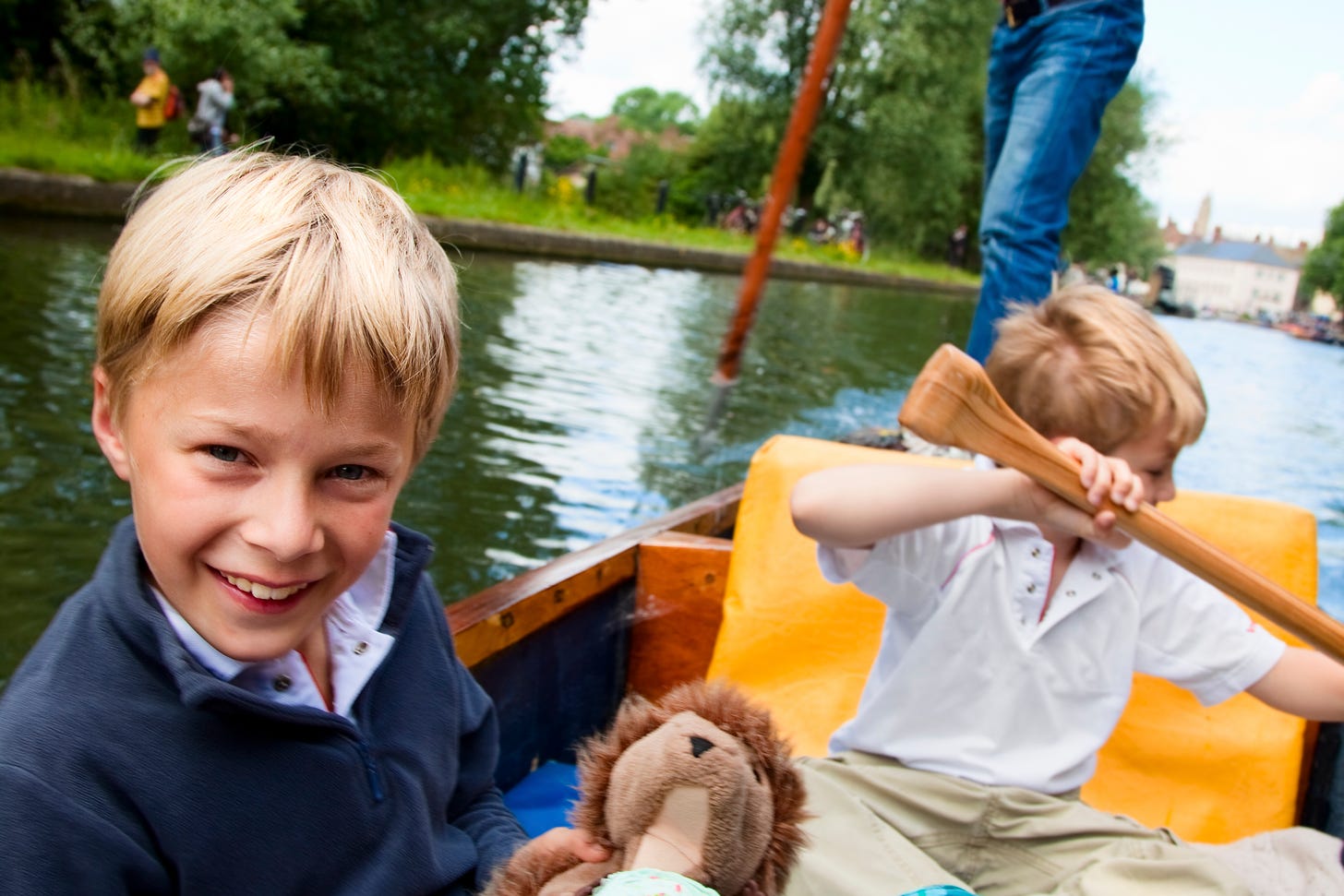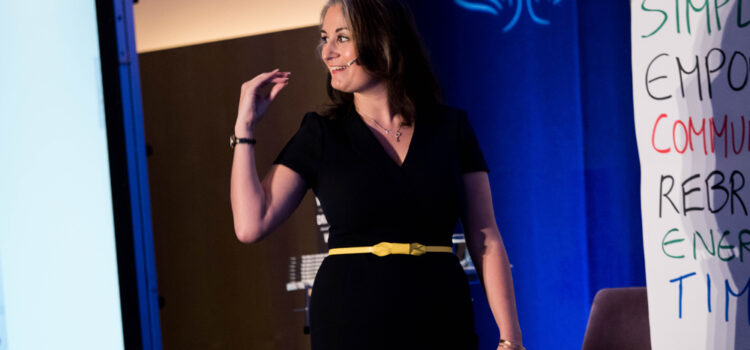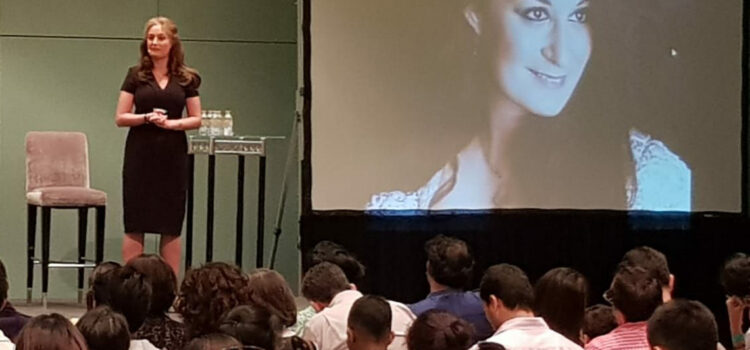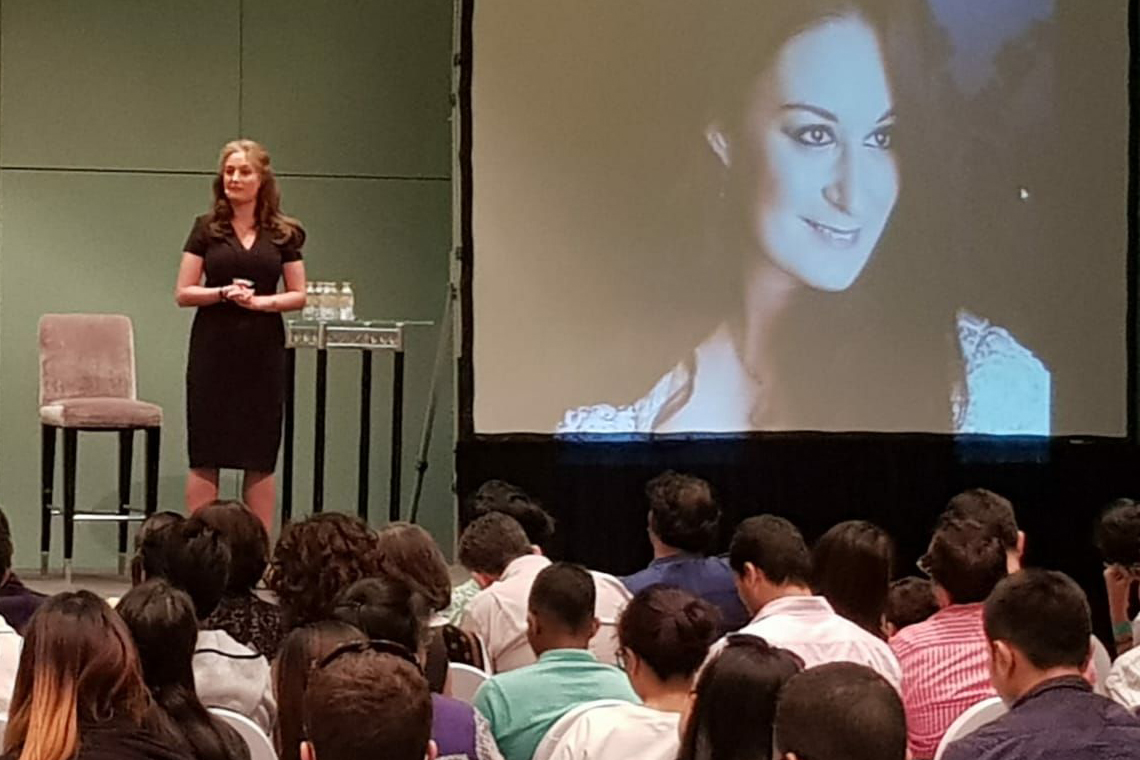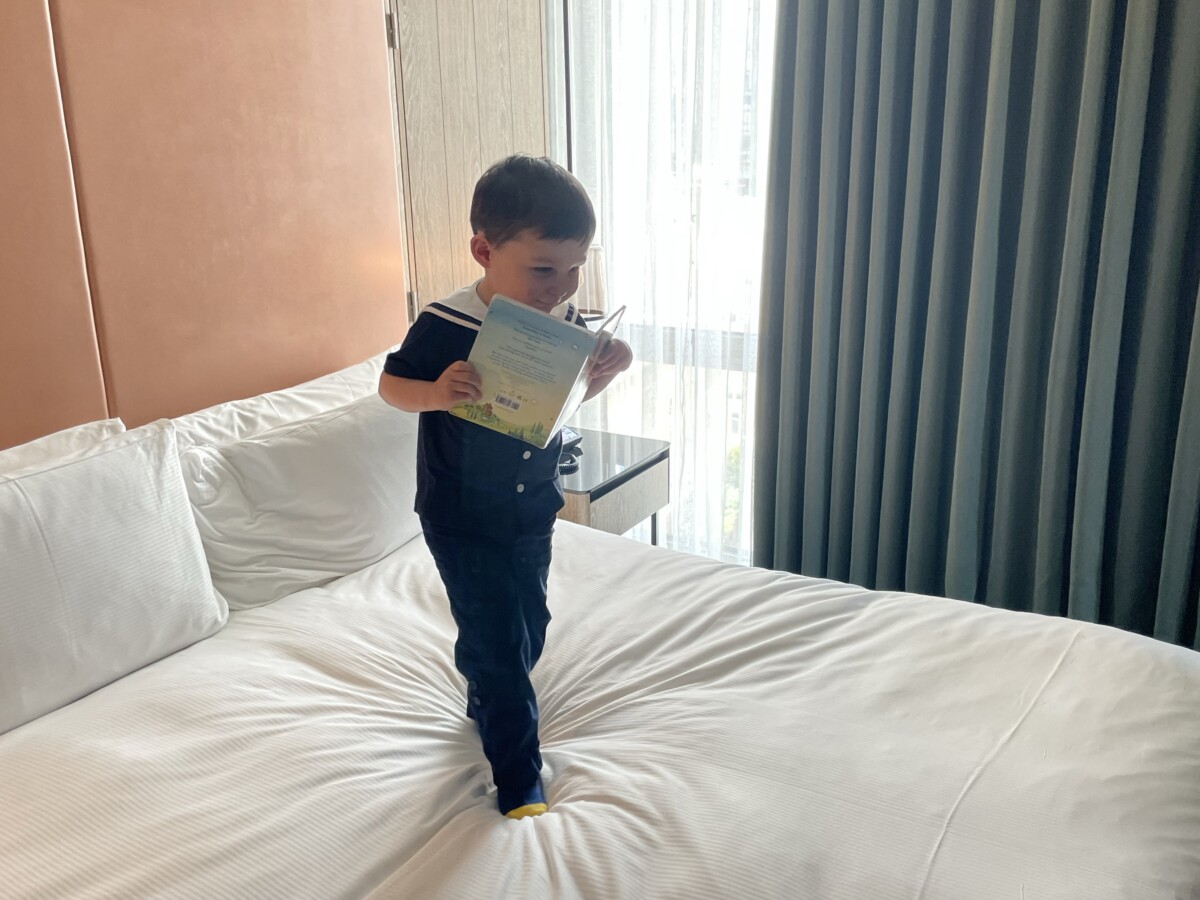Hey there, fellow parents! Are you pondering over which language would be the perfect fit for your brilliant child to study? At Creating Brilliant Kids, we understand the importance of helping you make informed decisions that will shape your children’s futures. So let’s begin this language-learning journey together.
Today I will be discussing the decision making behind language choice for your child and I will be giving you the top five language choices for your child and give you the we see chosen the most.
Step 1: Look At The Child Not The Language First
So many parent’s come to us, exhausted from having sat down surrounded by stacks of language textbooks, trying to decide which path their child should take and ending up no closer to a decision. It’s because they are looking at the language not the child. If you have been there and done that, fear not it happens to the best of us.
Here is the CBK way to guide you through this exciting yet daunting decision-making process:
Follow Their Passion
When it comes to choosing a language for your child to study, passion is key. Remember when little Emily couldn’t stop talking about her dream of visiting Paris? That’s your cue! Encourage your child to pursue their interests and let their passions be the compass that guides their language-learning journey. Whether it’s the allure of Spanish flamenco or the intrigue of Mandarin characters, fuel their curiosity and watch them soar!
Consider Future Opportunities
If your child is old enough get them to understand the benefits to avoid the age-old question: “But why do I need to learn another language?” Feel free to tell them the story about my friend Jack. Jack’s parents encouraged him to learn German, and boy, did it pay off! Fast forward a few years, and Jack found himself landing a dream job at a multinational company, all thanks to his language skills. We all know someone like Jack. You may even be like Jack yourself. Get your children to see the benefit of future opportunities that learning a new language can unlock for them and see if that sparks a discussion of what types of opportunities they feel drawn to. Who knows where their linguistic journey might lead?
Connect with Culture
Learning a language isn’t just about memorising vocabulary and conjugating verbs; it’s about immersing oneself in a whole new world of culture and traditions. Take it from Sarah, whose son James fell head over heels for Japanese anime. Inspired by his passion, Sarah enrolled James in Japanese classes, opening the door to a deeper understanding of Japanese culture and forging lifelong connections along the way. They had fun making sushi together, having Japanese tea ceremonies and much more. So, when choosing look to the bigger picture of choosing a language that resonates with your child’s interests and allows them to explore new horizons at the same time.
Embrace the Challenge
Let’s face it learning a new language can be challenging, but oh-so-rewarding! If you want your child to attempt a language that is very different to their own, you need to make sure that they are ready to embrace the challenge, knowing that every stumble and stumble is a stepping stone towards fluency. If this is not where they are at, then choosing a language with a different alphabet or characters may be too much of a hurdle for them. It is more important for them to love learning than the language itself, because without the love they won’t keep up the language. If they fail too many times and give up before they succeed, then they won’t look to learning a third language, which is the ultimate goal.
Step 2: Learn About The Languages From A Bigger Perspective
Choosing the perfect language for your brilliant child is a journey filled with endless possibilities and exciting discoveries, but every child is different and there is no one language that fits all.
Here is a little more information on the top 5 languages as chosen by us at CBK. We wold love to hear reasons for choosing other languages in the comments.
French
Bonjour! French, often dubbed the language of love, sophistication, and culinary delights, presents a tantalising gateway to a world of opportunities for aspiring linguists.
A Global Linguistic Landscape: French is not confined to the streets of Paris; it spans continents and cultures as the official language in 29 countries worldwide. These countries include France, Canada, Belgium, Switzerland, Luxembourg, Monaco, and several African nations such as Senegal, Ivory Coast, Democratic Republic of the Congo, and Madagascar, among others. From the romantic boulevards of France to the picturesque landscapes of Canada’s Quebec province and the vibrant cities of Africa, including Senegal, Ivory Coast, and Madagascar, French permeates diverse societies, enriching both daily life and global interactions.
A Thriving Linguistic Community: With approximately 300 million French speakers worldwide, the language forms a vibrant linguistic community encompassing native speakers, second language learners, and foreign language enthusiasts. This extensive network embraces cultural exchange, facilitates cross-border communication, and nurtures a shared appreciation for French art, literature, and my personal favourite french cuisine.
Unlocking International Opportunities: French’s status as one of the official languages of prestigious international organisations, including the United Nations, the European Union, and the International Olympic Committee, underscores its significance on the global stage. Proficiency in French opens doors to diplomatic engagements, cultural exchanges, and business ventures across continents, offering a competitive edge in today’s interconnected world.
Seamless Integration with British Culture: Despite its global reach, French seamlessly integrates with British culture, serving as a bridge between nations. Whether savouring a freshly baked croissant in a quaint Parisian café or negotiating business deals in the bustling markets of Francophone Africa, French enhances personal and professional experiences while leaving room for British cultural identity.
Embark on a Francophone Adventure: With its blend of elegance, diversity, and global significance, learning French invites aspiring linguists on an unforgettable journey of exploration and discovery. From mastering the language of Molière and Proust to immersing oneself in the vibrant tapestry of French culture, it is more than just a widely spoken language.
Spanish
Hola amigos! Spanish, known for its vibrancy and cultural richness, transcends borders and opens doors to a world of business opportunities for ambitious individuals.
Expanding Horizons Across 21 Countries: Spanish is not just a language; it’s a hot contender for our top language. It is spoken as the official language in 21 countries. From the lively streets of Spain to the bustling markets of Mexico and the serene landscapes of Argentina, Spanish permeates every facet of life across Central and South America, as well as in Equatorial Guinea in Africa. Additionally, the United States boasts a significant Spanish-speaking population, further solidifying the language’s global reach.
A Massive Linguistic Network: With over 460 million native speakers worldwide and millions more proficient in Spanish as a second language, the Spanish-speaking community forms a vast linguistic network spanning continents and cultures.
Unveiling Cultural Riches: Mastering Spanish opens children up to cultural riches, offering insights into the diverse heritage, traditions, and customs of Spanish-speaking countries. From flamenco dancing in Spain to tango performances in Argentina, the cultural tapestry woven through the Spanish language provides a unique perspective and appreciation for global diversity.
Opportunities in Business and Beyond: As the second most spoken language globally, Spanish proficiency is a valuable asset in the business world. From conducting negotiations and forging partnerships to engaging with clients and expanding market reach, fluency in Spanish enhances professional opportunities across various industries. Whether navigating international trade, exploring emerging markets, or tapping into the rich cultural landscape of Spanish-speaking countries, proficiency in Spanish empowers individuals to thrive in today’s interconnected global economy.
Seize the Spanish Advantage: In a world where connections are key, mastering Spanish offers a gateway to success, enriching both personal and professional endeavours with unparalleled cultural insights and endless opportunities for growth and prosperity.
Mandarin Chinese
Ni hao! With China’s booming economy and growing influence on the global stage, Mandarin Chinese is a language that holds immense promise for our aspiring world changers.
How Many Countries Speak Mandarin as a First or Second Language: Mandarin Chinese is spoken as the official language in one country, which is China. However, due to its significant global influence and the Chinese diaspora, Mandarin Chinese is spoken quite widely in Southeast Asia and other regions with Chinese communities. These countries include Taiwan, Singapore, Malaysia, Indonesia, Thailand, the Philippines, and others and although not the official language in these countries, it is often taught in schools as a second language.
How Many People Speak Mandarin: Mandarin Chinese boasts over 1.1 billion speakers worldwide, making it the most spoken language globally. While primarily spoken in China, Mandarin extends its reach across the globe.
The Opportunities for Use in Business: The significance of Mandarin in the business realm cannot be overstated. As China continues to solidify its position as a powerhouse in finance, technology, and trade, proficiency in Mandarin opens doors to lucrative business ventures and invaluable cultural insights. Whether negotiating deals, establishing partnerships, or navigating the complexities of international commerce, fluency in Mandarin positions individuals for success in today’s interconnected global marketplace.
Difficulty Rating: While the tonal nature of Mandarin may pose a challenge, the rewards are well worth the effort. From forging business partnerships to unlocking cultural insights, Mandarin opens many doors and emerges as a pivotal language for aspiring individuals seeking to make their mark on the world stage.
German
Hallo! Embracing Opportunities with German:
Guten tag! Germany, the land of innovation and efficiency, beckons our young language learners with its rich cultural heritage and economic prowess.
The Successful Six: German serves as the official language in six countries, including Germany, Austria, Switzerland, Liechtenstein, Luxembourg, and Belgium, forming the linguistic backbone of Central Europe. Beyond its official status, German is also spoken as a minority language in select regions of Italy, France, and other European nations, highlighting its cultural significance and linguistic diversity.
A Global Language of Influence: It may serve six main countries but is has approximately 90 million native speakers worldwide, making German a language that occupies a prominent position among influential languages, shaping industries in manufacturing, engineering, and beyond. Its importance in business, science, and culture transcends borders, offering our budding brilliant linguists unparalleled opportunities for professional advancement and cultural exchange.
Gateway to Thriving Industries: From engineering marvels in the heart of Berlin to innovative startups in Munich’s tech hub, proficiency in German opens doors to dynamic career paths for brilliant kids everywhere.
Cultural Exchanges with Neighbours: Whether exploring the historical landmarks of Vienna, savouring the culinary delights of Zurich, or embarking on Alpine adventures in Austria and Switzerland, proficiency in German enriches your child’s cultural experiences too.
Difficulty Rating: Despite its reputation for linguistic complexity, mastering German offers a journey of familiarity and discovery, with its similarities to English many say mastering German is a journey that feels like a walk in the park. From mastering grammatical nuances to immersing oneself in the works of Goethe and Kafka, embracing German promises a rewarding odyssey of personal growth and intellectual stimulation.
Arabic
Marhaba! Arabic, the language of intrigue and opportunity, beckons curious minds to explore its rich cultural heritage and geopolitical significance.
Geopolitical Significance: Arabic is spoken as the official language in 22 countries across the Middle East and North Africa, including nations such as Saudi Arabia, Egypt, and the United Arab Emirates but also extending to Algeria, Bahrain, Comoros, Djibouti, Iraq, Jordan, Kuwait, Lebanon, Libya, Mauritania, Morocco, Oman, Palestine, Qatar, Somalia, Sudan, Syria, Tunisia, and Yemen.
A Global Language of Influence:With over 310 million native speakers worldwide and widespread adoption as a second language, Arabic serves as a bridge connecting cultures and fostering global engagement.
Opportunities & Global Engagement: As the fifth most spoken language globally, Arabic opens doors to diverse career opportunities in diplomacy, international relations, and the energy sector. Its prevalence in diplomatic circles and international organisations underscores its geopolitical importance and relevance on the world stage.
Difficulty Rating: While mastering Arabic script may pose a challenge, the cultural immersion and global engagement it offers are invaluable assets for our brilliant kids. From exploring ancient historical sites to navigating bustling marketplaces, proficiency in Arabic opens doors to authentic cultural experiences and meaningful connections with Arabic-speaking communities worldwide.
The Best Language As Chosen By Us
In the end, the best language choice for your child is a personal decision that hinges on their interests, aspirations, and cultural connections. By considering the principles of choice architecture—preserving freedom of choice, incentivising learning, and making the process enjoyable—we can guide our children towards selecting a language that not only enriches their lives but also opens doors to a world of endless possibilities.
However if you really want a winner we have a tie. We chose Mandarin for the children who are drawn to learning new characters and tonal differences, and Spanish for everyone else.
Make it Fun and Interactive
Who says learning can’t be fun? Inject some excitement into your child’s language-learning journey with interactive games, cultural activities, and immersive experiences. From cooking up Spanish paella to exploring virtual reality worlds in Chinese, the possibilities are endless! By making language learning a fun and engaging adventure, you’ll ignite your child’s curiosity and set them on the path to success.
What Language Did You Want To Win?
What did you choose? Or are you still deciding. Below are a few more facts to help your decision to raise your brilliant multilingual marvel the Creating Brilliant Kids way.
Language Summaries:
French:
- Ideal for children seeking a European connection or considering immigration, offering opportunities for European passport acquisition.
- Suited for those aspiring to careers in international diplomacy, fashion, or gastronomy, where French proficiency is advantageous.
- Appeals to children passionate about exploring diverse cultures and landscapes in French-speaking countries, fostering cultural understanding and appreciation.
Spanish:
- Perfect for children aiming to connect with vibrant Spanish-speaking cultures and broaden their horizons.
- Offers practical benefits for those with aspirations to travel, study, or work in Spain, Latin America, or the United States.
- Valuable for kids who recognise the widespread use of Spanish and its potential for enhancing career prospects on a global scale.
Mandarin Chinese:
- Ideal for children interested in China’s dynamic economy and its growing influence in global affairs.
- Provides opportunities for business, trade, or cultural exchange with Chinese-speaking communities worldwide.
- Appeals to kids intrigued by the challenge of mastering a language with a rich history and cultural heritage, opening doors to diverse opportunities.
German:
- Attractive for children drawn to Germany’s reputation for innovation, quality education, and high living standards.
- Offers pathways for higher education, career advancement, or cultural experiences in Germany and other German-speaking countries.
- Appreciated by kids for its practicality in Europe and its potential for accessing various industries and professional opportunities.
Arabic:
- Suited for children interested in the rich history, diverse cultures, and geopolitical significance of the Middle East.
- Provides pathways to careers in international relations, journalism, or humanitarian work in Arabic-speaking regions.
- Has great value as a language spoken across vast regions with significant economic, political, and cultural influence.

